Thank Shaw for his English reading recording, which you can listen to by clicking the audio above.
感谢肖为本文提供英文朗读录音,点击上方音频可听。

伊兹密尔钟楼(土耳其语:İzmir Saat Kulesi)
With an interest in working for world heritage, I applied and was accepted for a UNESCO World Heritage Volunteer program in Izmir, Turkey, held from Sept 4th-15ththis year. The program is titled Sustainable Heritage for the Future in Historic Izmir and is hosted by The Historical Port City of Izmir Site Management Office.
因为想从事世界遗产方面的工作,我申请了一个今年9月4日至15日在土耳其伊兹密尔的UNESCO世界遗产志愿者项目。这个项目名为“伊兹密尔老城未来可持续遗产”,由伊兹密尔历史港口城市遗址办公室举办。
Taking advantage of this program, I got a fantastic opportunity to visit nearly all the important archaeological sites and historical parts in Izmir, among which the 8500-year-old Yeşilova Höyük attracted me the most. It is the oldest settlement area in Izmir known today, the age of which is similar to another well-known prehistorical site in Anatolia (Asia Minor), Çatal Höyük. (Höyük is a Turkish word meaning tumulus. Visit https://www.catalhoyuk.com for more information about Çatal Höyük and https://yesilova.ege.edu.tr for more information about Yeşilova Höyük.)
借此项目机会,我参观了伊兹密尔几乎所有的重要考古遗址和历史街区,而其中最让我感兴趣的是8500年的Yeşilova Höyük。这是伊兹密尔现已知最古老的人类居住址,其年代和另一个安纳托利亚(小亚细亚)有名的史前遗址Çatal Höyük(国内已有翻译为加泰土丘)相近。(Höyük是一个土耳其语词汇,意为坟冢。有关Çatal Höyük更多信息可访问https://www.catalhoyuk.com。有关Yeşilova Höyük更多信息可访问https://yesilova.ege.edu.tr)
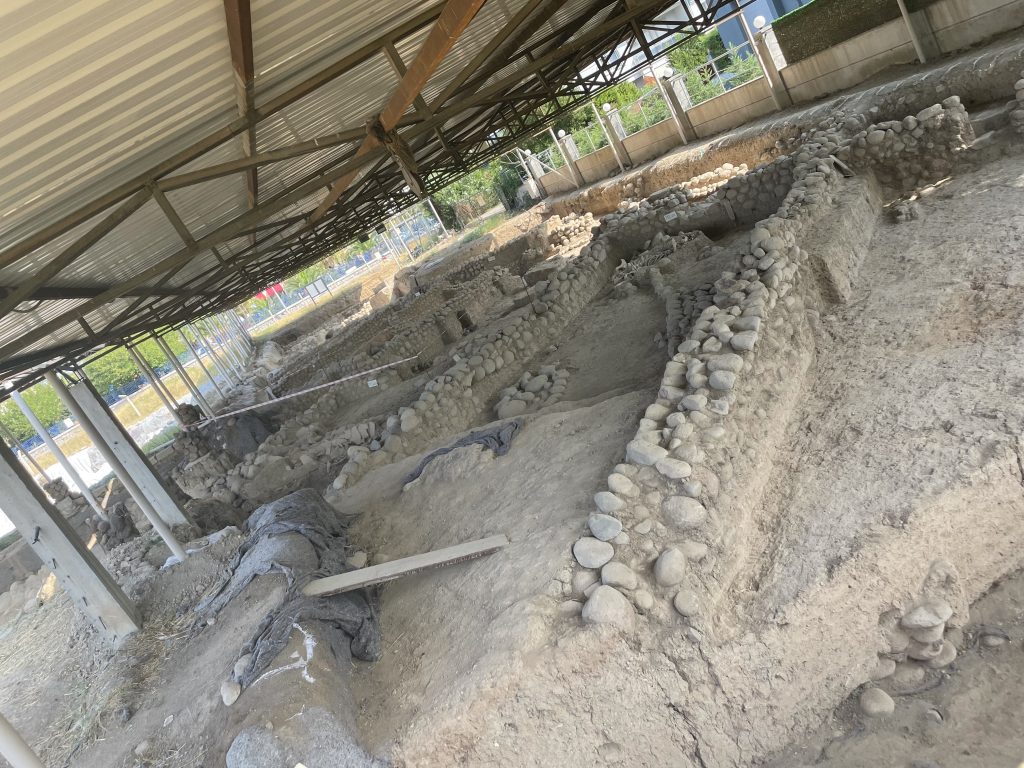
Yeşilova Höyük一处尚在挖掘中的居址
I have known Çatal Höyük for many years due to my research on the early use of plant fibres. Several of the oldest textile fragments made from plant bast were unearthed there, including fabric and rope dating back to 8500 years ago, the same age as Yeşilova Höyük. Naturally, I wonder whether textile remains are also found here.
由于对早期植物纤维使用的研究,我了解Çatal Höyük已有些年头。那里发现了几件世界上最古老的纺织品残片,包括由植物韧皮材料制成绳线和织物。那些残片的年代也在8500年左右,与Yeşilova Höyük同期,我自然也就想知道,这里是否也有纺织品出土。
Following the project, we were fortunate to be guided and interpreted by Dr. Zafer Derin, excavation leader at Yeşilova Höyük. We visited a part of the Neolithic settlement under excavation and the Visitor Centre under construction.
随着项目的进行,我们在Yeşilova Höyük的考古发掘队长Zafer Derin博士的带领下,参观了一部分尚在挖掘中的新石器时代居住址,以及还在建设中的游客中心。
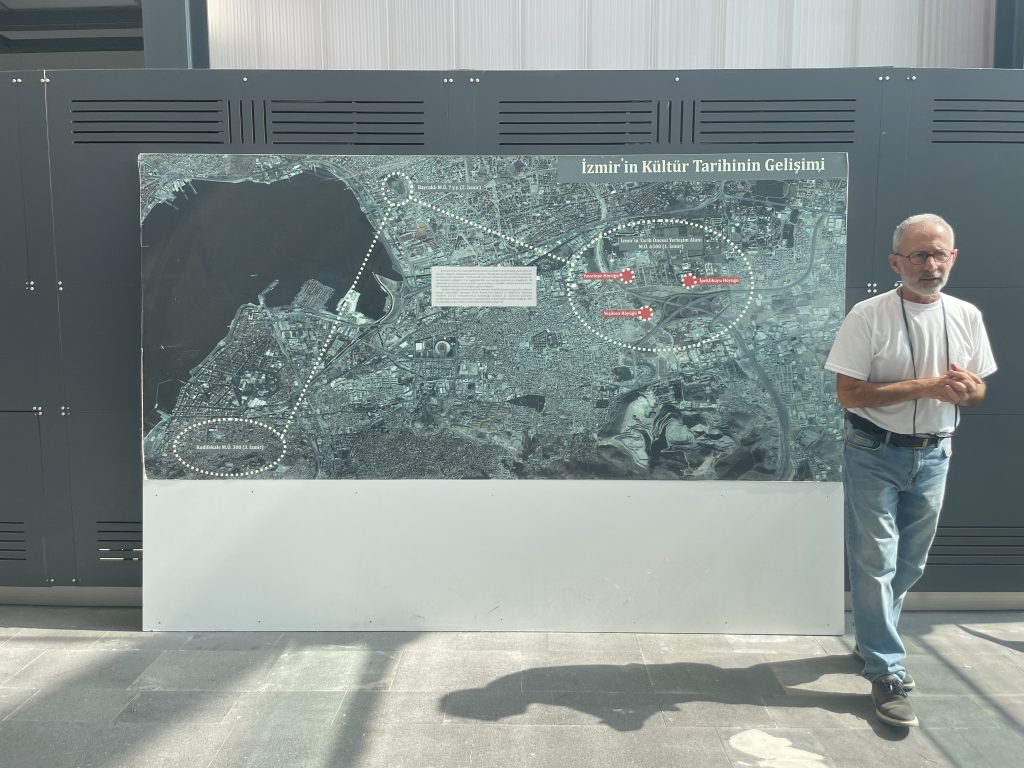
Zafer Derin博士为我们提供导览与讲解
In the museum of this site as a part of the Visitor Centre, I didn’t see any archaeological objects exhibited. Duplicates, reconstructions and artworks were created to tell the story, rebuilding the prehistoric life of residents in this area. Unsurprisingly, views of textiles produced or used with tools are shown here, including the fishnet on net weights, yarns spun on a spindle, fabric woven on a vertical loom, etc. Since I didn’t see any archaeological textile materials but reconstructed tools with modern products, I asked whether textiles were unearthed here and how they knew the way of using the tools.
在该遗址游客中心的博物馆里,我没看到有考古实物展出,只见到了用来讲故事的复制品、复原模型和艺术品。它们展示了这个地方史前人类的生活。毫不意外,这里也复原了用工具生产或使用纺织品的景象,包括挂在网坠上的渔网、纺在纺锤上的纱线、织在立式织机上的织物等。鉴于我在这儿只看到了重构纺织工具和用其制作的现代产品,而没有看到任何纺织品的考古遗存,我问了考古队长他们是否发现过纺织品,以及他们如何知道这些工具的使用方式。
Answered by Dr. Zafer Derin, they haven’t found any textile remains yet. Only needles made of bone, net weights, loom weights, spindle whorls made of stone or pottery, and some wooden loom parts were discovered. They also found impressions of woven fabric on the surface of some potteries. The weaving pattern at Yeşilova Höyük was reconstructed according to these impressions and results from other research about prehistoric textile production.
考古队长说,他们还没在这里发现任何纺织品遗存,只发现了骨质的针,石质或陶质的网坠、线锤、纺轮,还有一些木质的织机部件。在一些陶器的表面,他们有发现过机织物的印痕,该遗址的织造模型就是根据这些印痕中的织物结构以及其它研究中有关史前纺织生产的结论复原的。

挂着网坠的渔网复原模型
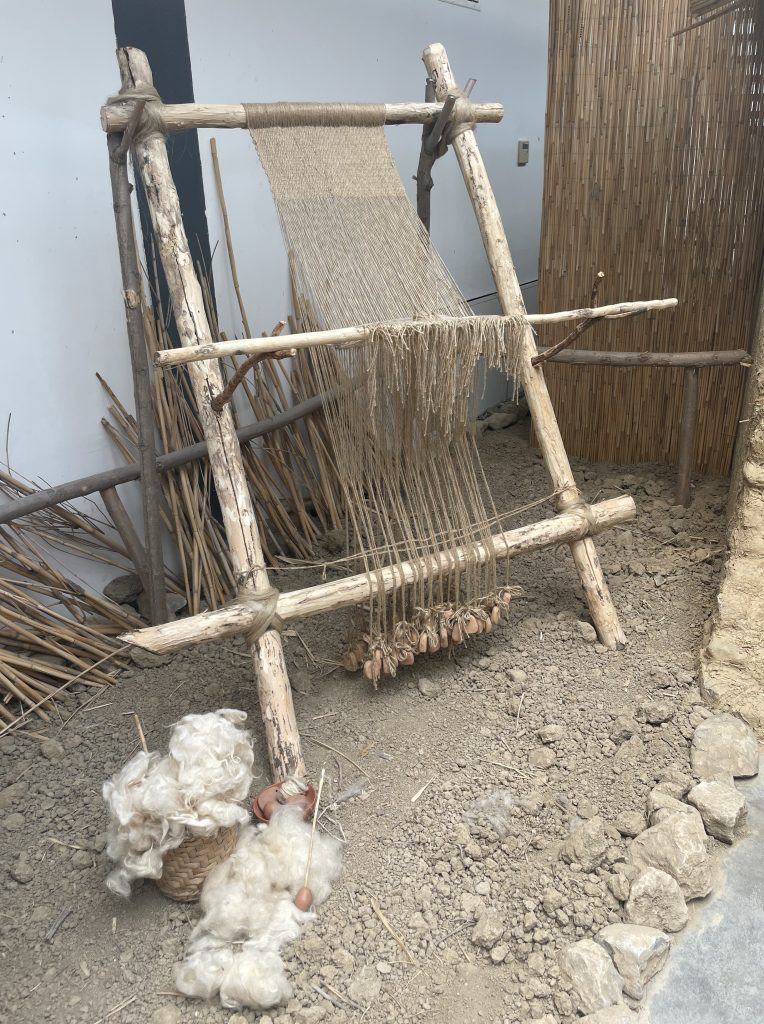
立式织机织造复原模型
On weekends, we visited the Archaeology and Ethnography Museum in Izmir Culture and Arts Factory (Turkish: İzmir Kültür Sanat Fabrikası), where I saw textile tools unearthed from Yeşilova Höyük and some other prehistoric sites. Apart from bone needles, net weights, loom weights and spindle whorls, some Neolithic slingstones with reconstructed ropes used for hunting and seals speculated to be used for fabric printing are also exhibited. No rope or fabric was found and preserved but we can imagine and infer their existence from these stone or pottery tools.
周末,我们参观了伊兹密尔文化与艺术工厂(土耳其语:İzmir Kültür Sanat Fabrikası)里面的考古学与民族学博物馆。在这里,我见到了从Yeşilova Höyük和一些其它的史前遗址出土的纺织工具。除了前文提到的骨针、网坠、线锤和纺轮,还有一些新石器时期的石弹和印章。这些石弹在远古时期辅以绳索(投石索)被用于狩猎,印章被认为是用于纺织品上的印花。其中的绳索和织物都没有保存下来也没有被发现,但我们可以通过这些石质或陶质的工具想象和推理它们的存在。石弹和印章在展厅中分别与重构的绳索和织物一起展览,以展示它们与纺织品有关的用途。

新石器时代的骨针和带孔骨器
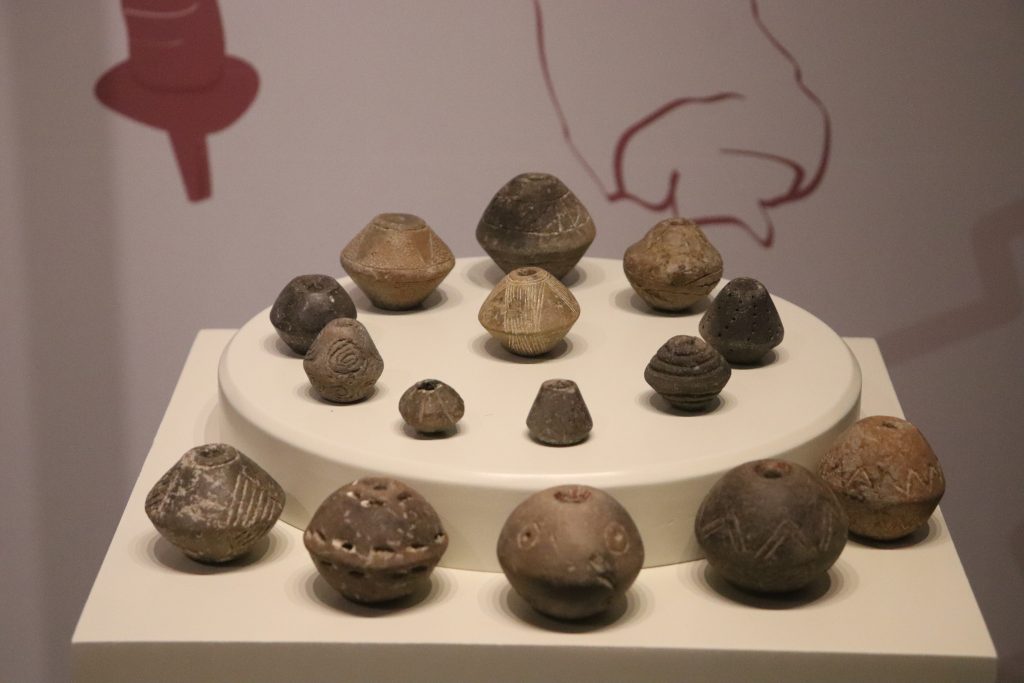
新石器至青铜时代晚期的纺轮 1
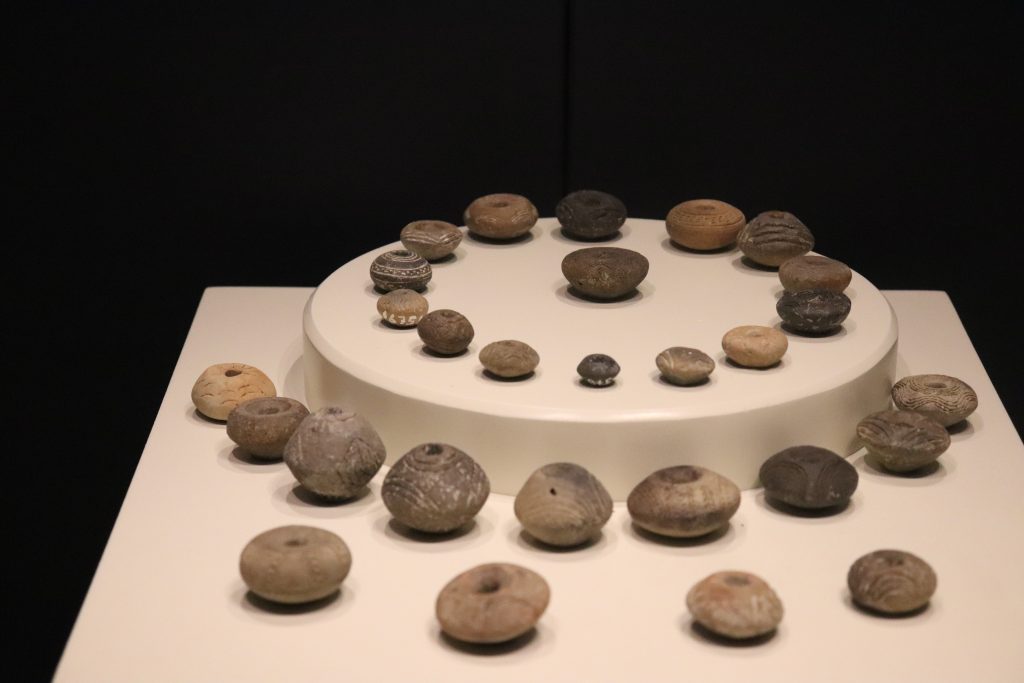
新石器至青铜时代晚期的纺轮 2

新石器时代的重锤
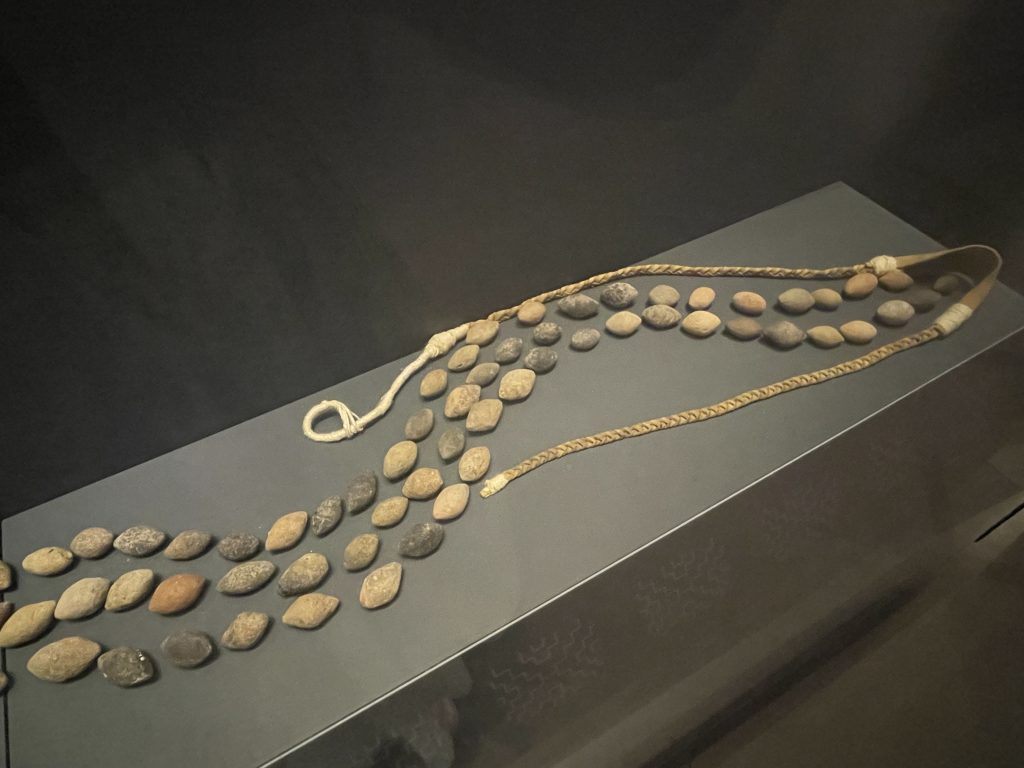
新石器至青铜时代中期的石弹
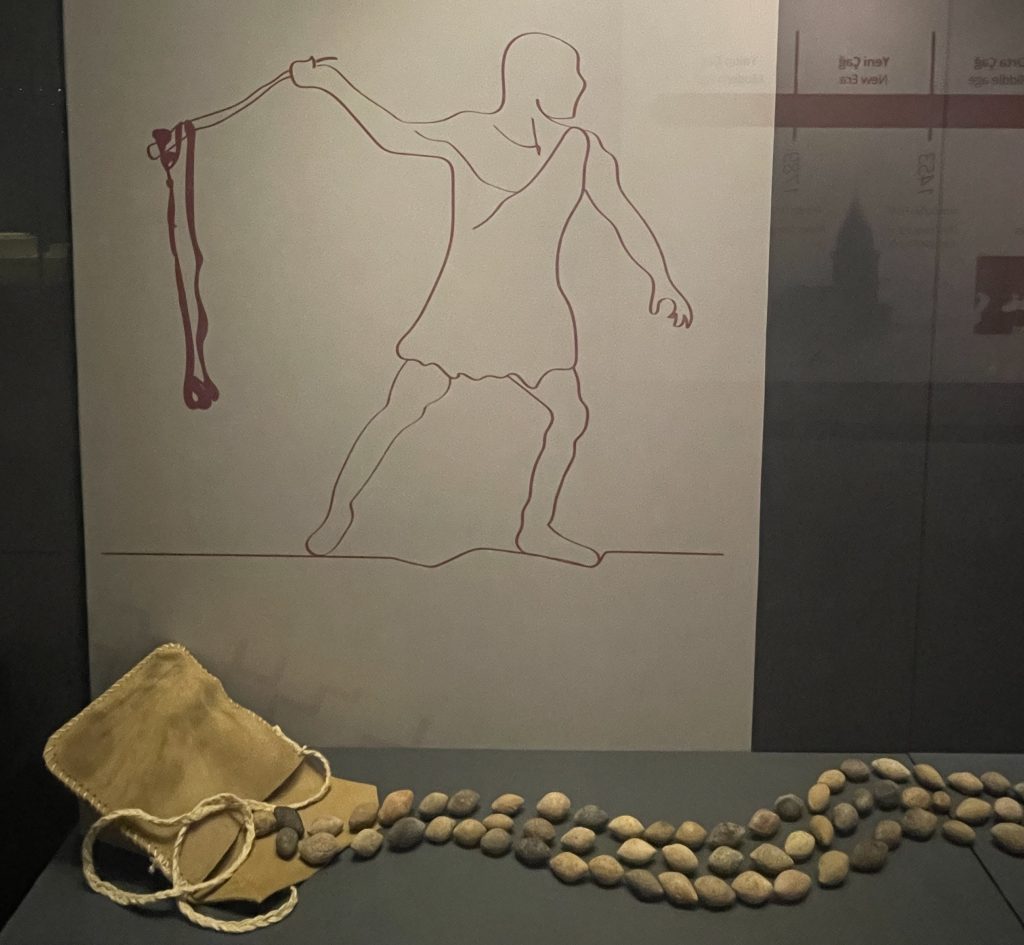
投石索使用的复原图景
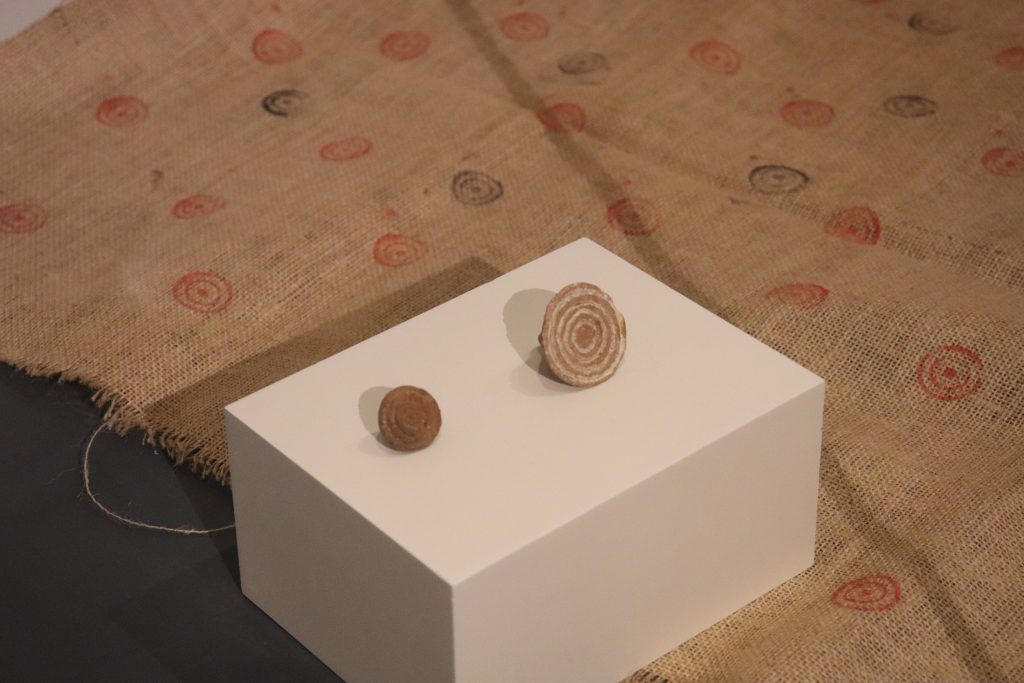
被认为用于纺织品印花的史前印章
All of the tools mentioned above are indirect evidence of the existed but vanished textiles, which is common in many other prehistoric sites in the world. Though hard to see them today, textiles were produced at least 8500 years ago in Izmir. Wool or plant-bast might be used as resources. I guess, it would be more difficult to find textile remains here than in the similar aged site Çatal Höyük because it is wetter here close to the Aegean Sea. Since the excavation is still ongoing, I look forward to seeing new results in the future, which might bring us breathtaking new ideas.
所有这些工具都是已消失的纺织品曾经存在过的间接证据,这在世界上的许多史前遗址中都很普遍。尽管如今已很难见到8500年前的纺织品,从这些工具可以知道,当时在伊兹密尔已有纺织生产,所用材料可能是羊毛或植物韧皮。我猜,这里会比同时期的Çatal Höyük更难发现纺织品遗存,因为这里靠近爱琴海,环境更为潮湿。由于这里的考古发掘还在进行中,我期待以后会看到新的发现,或许能为我们带来新的想法。
Finally, I would like to thank the managers of The Historical Port City of Izmir Site Management Office for offering me this opportunity to take a close look at Yeşilova Höyük and communicate with archaeologists here, Deniz for his Turkish-English interpretation in my asking detailed questions about textiles, Irmak for lending me her camera to take higher-quality photos in the Archaeology and Ethnography Museum, and other volunteers for their valuable conversations and nice accompanies in this program.
最后,我要感谢伊兹密尔历史港口城市遗址办公室的工作人员为我提供了此次近距离参观与交流的机会;Deniz在我提问有关纺织品的细节时,帮我做了土耳其语和英语的互译;Irmak在考古学与民族学博物馆借我相机拍摄了质量更好的照片。同时,也感谢项目中其他志愿者们每一次有价值的交谈与全程陪伴。